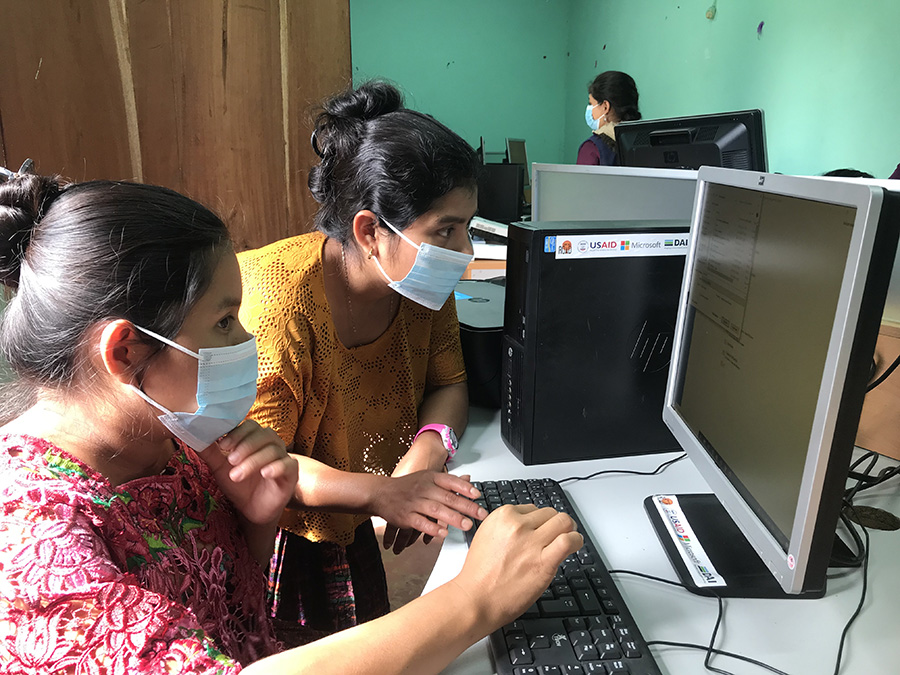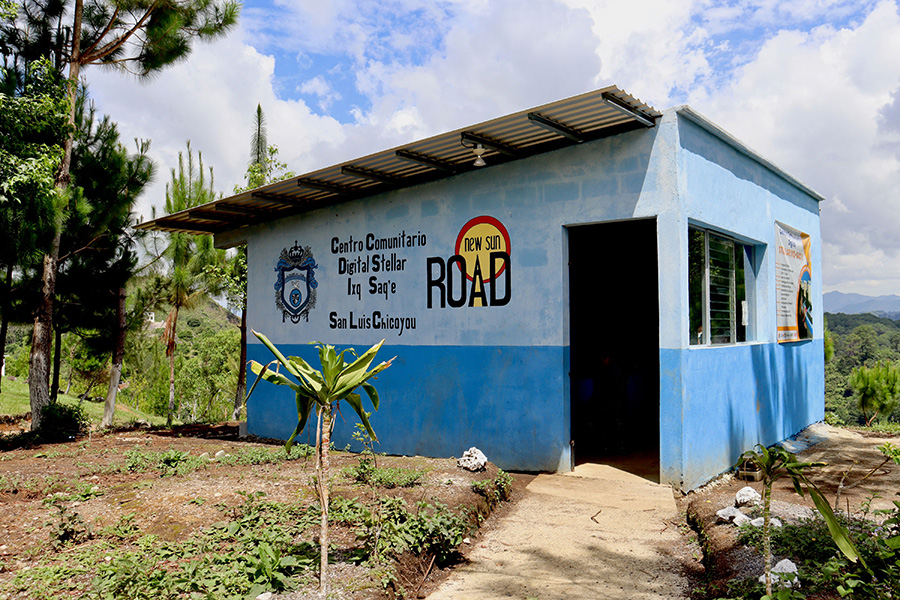Let us know what type of content you'd like to see more of. Fill out our three question survey.
Can Rural Digital Community Centers Be Sustainable?
Mar 14, 2024
This blog first appeared in ICT Works.
To bridge the digital divide, digital community centers—physical spaces that provide access to the internet, technology devices, and digital skills—have become a popular solution for organizations working to bring connectivity to remote areas. Not only do these centers bring internet access to previously unconnected communities, but they also deliver digital literacy training to equip citizens with the skills and knowledge to use technology for personal and economic growth while ensuring their meaningful and safe use of it. While these centers may benefit their communities and act as gateways to the digital world, a pressing question lingers: Can these centers become truly sustainable and self-sufficient?
In this post, we explore the lessons learned by digital community centers established under the USAID/Microsoft Airband Initiative, a public-private partnership that seeks to bring internet access to more women around the world. Partners of the initiative, including internet service providers (ISPs) and technology companies, have built and managed these centers in rural and semi-urban areas and pursued different models for sustainability. We’ll delve into the approaches the partners have pursued to keep community center doors open once initial financial support from the U.S. Agency for International Development and Microsoft ended.
Barriers to Sustainability
Digital community centers often rely heavily on donor funds, raising concerns about their long-term viability. The USAID/Microsoft Airband Initiative provided startup funding to enable communities to establish the centers, after which the centers are responsible for funding themselves. However, high operational and maintenance costs often pose significant challenges to their operations. In most cases, members of the communities cannot justify paying for the centers’ services if they do not find genuine value in them. Balancing affordable access with perceived value is therefore essential to cultivating a self-reliant user base, and this requires a deep understanding of the community’s needs and aspirations.
With these challenges in mind, each Airband Initiative partner has tested different strategies to keep the centers operational.
1. Microbusiness Model: Transitioning the Centers into Internet Cafes
One promising approach is the transition of community centers into self-sustaining microbusinesses. One such example is turning them into internet cafes that charge for internet access and for the use of other services, such as printing, scanning, professional development training, and issuing government documents. By doing so, the centers can generate revenue while meeting the community’s needs. New Sun Road, a public benefit corporation and Initiative partner, has successfully adopted this approach in Guatemala.
“New Sun Road implemented a business model taking into consideration the historical financial data gathered from the communities. This model is aimed to cover the [operational expenses] and make [the digital community centers] profitable with the current revenue generated,” said Susana Arrechea, Global Programs Director at NSR. Currently, five out of nine NSR centers generate enough revenue to cover their operating expenses. The remote nature of these areas makes the services offered highly valuable, incentivizing community members and individuals from neighboring regions to pay to use them. Bluetown, another Airband Initiative partner and ISP in Ghana, is replicating this model and turning their centers into business centers where anyone can pay to use the internet, print documents, design CVs, and learn computer skills.

Internet cafe. Photo: New Sun Road.
2. Partnerships: Fueling Financial Stability
Partnerships can be another avenue towards sustainability. “For us, the key to success is having lots of partners and that all the stakeholders work together,” said Lene Schulze, Head of Global Partnerships at Bluetown. “Everybody needs to chip in and invest in this for it to happen.” This model allows the centers to share the financial burden with other organizations and associations for a mutually beneficial partnership.
Bluetown partners with the nonprofit CARE International to jointly fund the costs of their micro-operators who serve as community engagement facilitators at Bluetown’s digital community centers. Through this partnership, Bluetown can keep paying the micro-operators after donor funding runs out, and CARE leverages their skills in community engagement for its agriculture projects in the same areas. This cost-sharing arrangement enables the micro-operators to allocate their time effectively between the two organizations.
Anditel, a Colombian telecommunications company and Initiative partner, also found success through new partnerships with three organizations: Ayuda en Acción foundation, the Council of American Enterprises foundation, and the Internet Society Colombia Chapter. These organizations serve the needs of vulnerable populations in remote regions of Colombia, focusing their efforts on social, economic, educational, and productive development, all while making technology access a central pillar of their programs.
For these organizations, Anditel’s centers, equipped with internet connectivity, provided an opportunity to share resources and continue programming to achieve their objectives—the Ayuda en Acción foundation, for example, established an information system that helps cocoa farmers enhance the quality of their harvest. The system runs on Anditel’s networks, and the foundation provides training for the farmers who visit Anditel’s centers to access these tools and improve their produce. Similarly, the CEA foundation leverages the connectivity provided by Anditel’s centers to provide mentorship and skills training to entrepreneurs through HPlife, a platform that teaches in-demand skills and core business concepts for students and entrepreneurs. Finally, the partnership with the Internet Society Colombia Chapter supports Anditel in promoting and developing the Internet as a global technical infrastructure. These partnerships have enabled Anditel to maintain more diverse use cases for their connectivity networks.

Another New Sun Road outpost. Photo: Kendra Poole.
3. Community Engagement: Fostering Ownership
By encouraging community engagement and active involvement, digital community centers can become ingrained in the community. It requires building trust, understanding local dynamics, and addressing cultural sensitivities. New Sun Road’s women leadership committees, groups of women responsible for the administration and maintenance of each center, faced challenges when they took ownership of the centers, triggering resistance from male leaders in the Community Development Councils. The committees were able to overcome these power dynamics by inviting male leaders to engage with the centers through tailored training which helped them recognize how women in leadership positions benefit the entire community. This fostered a sense of ownership among all community members, empowering them to take pride and responsibility in sustaining the centers’ operations.
The Road to Sustainability
Sustainability is difficult to achieve for digital community centers. Throughout the USAID/Microsoft Airband Initiative, several community centers closed down for various reasons, including costs being too high for centers using satellite internet, partners not being able to take on the expected maintenance costs, and low community engagement. However, the digital community center model continues to have promise with its ability to bring digital resources and knowledge to remote areas.
We have found that, while the road to sustainability for digital community centers may be challenging, it can be achievable. The success of several approaches of the Initiative partners shows that it is possible to address the inherent obstacles to implementing this model while demonstrating the potential for digital community centers to revolutionize connectivity in remote areas where people are currently unconnected to the digital world.
Lana Alnesany is a Senior Communications Specialist on DAI’s Digital Frontiers team.